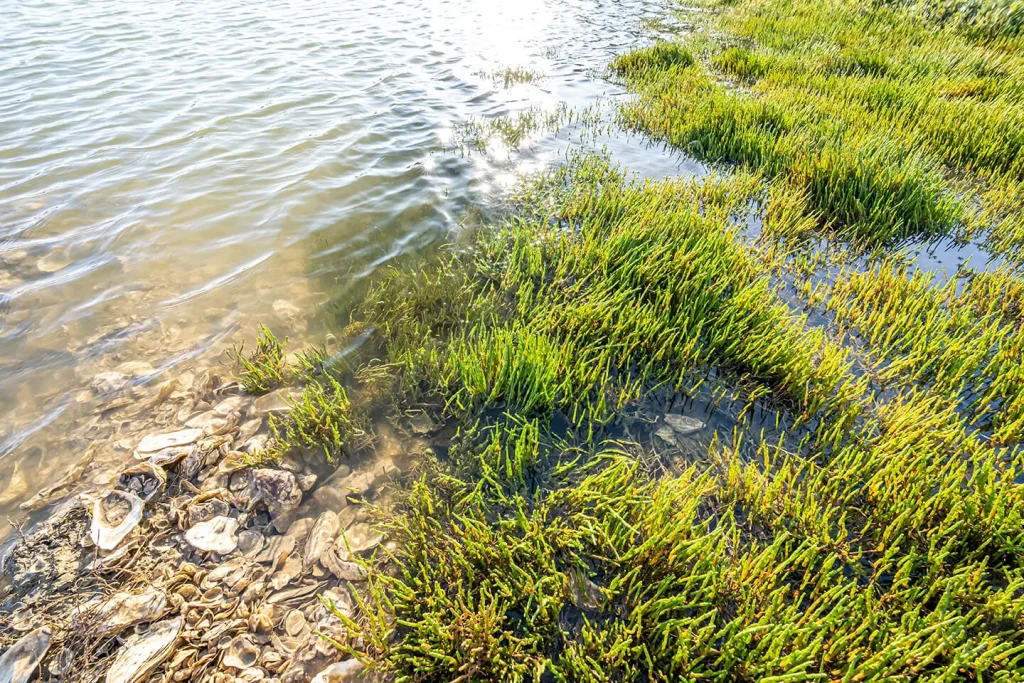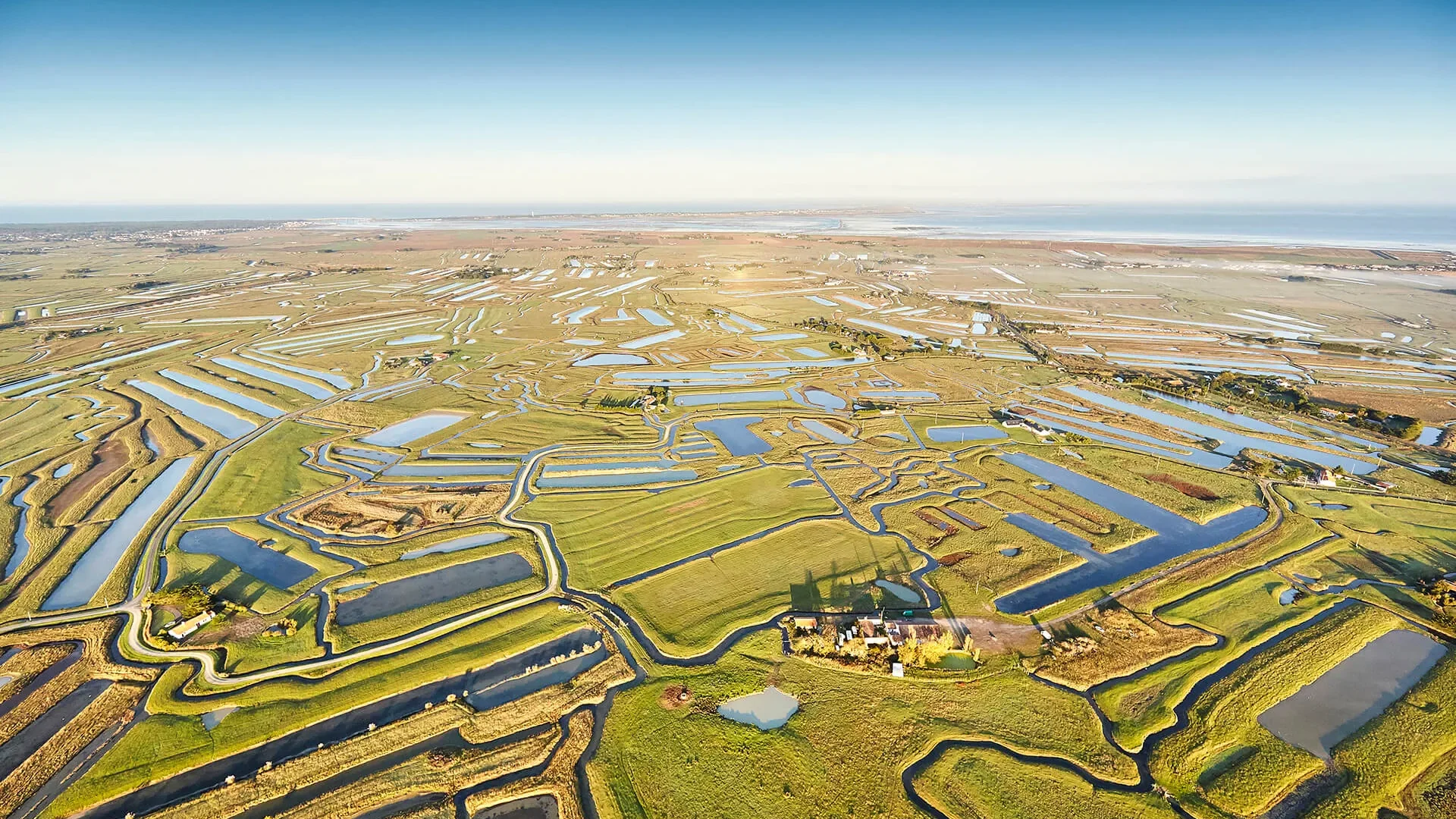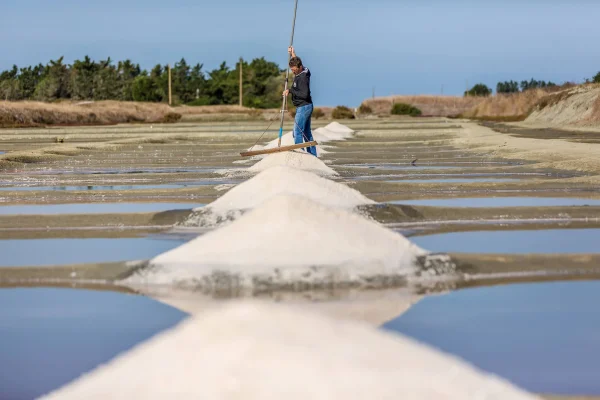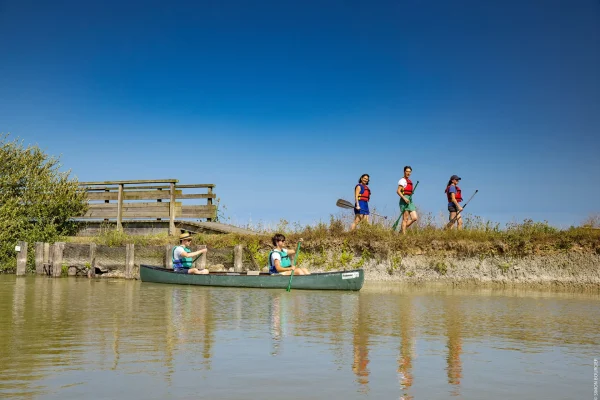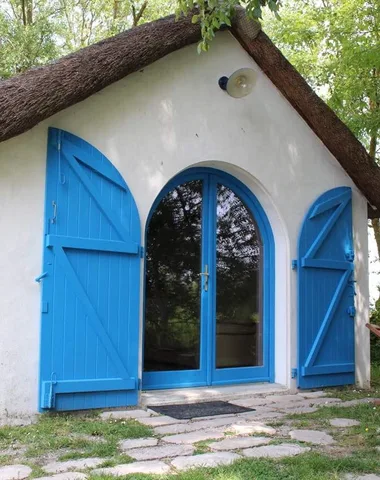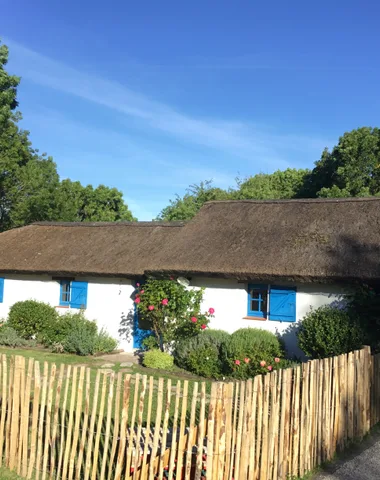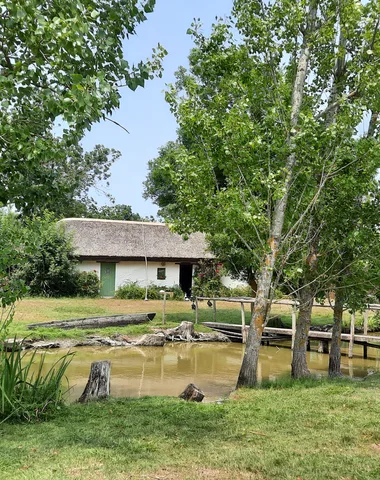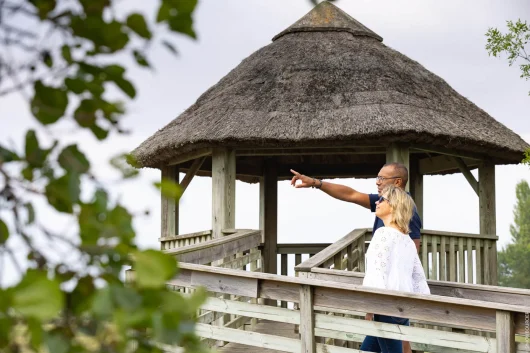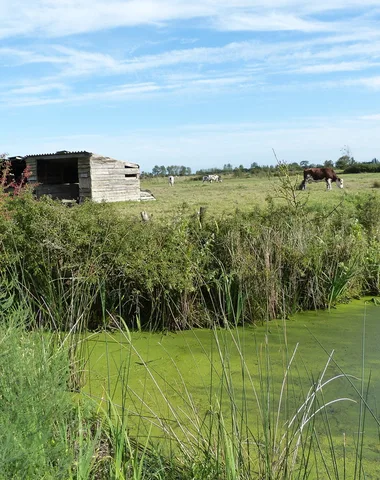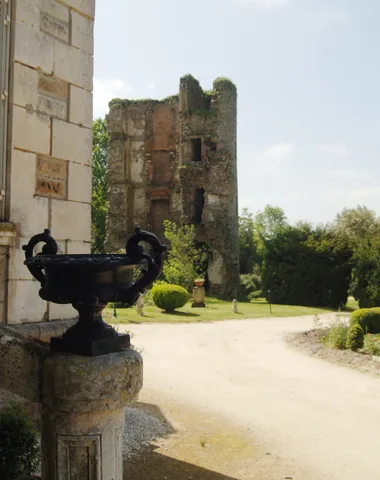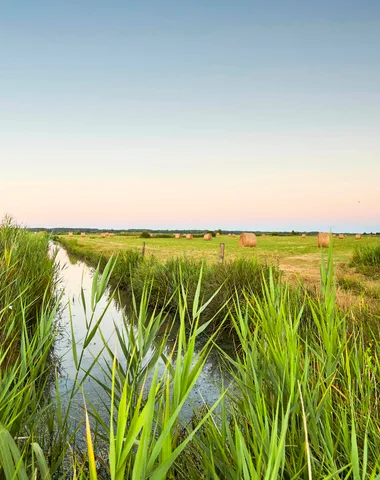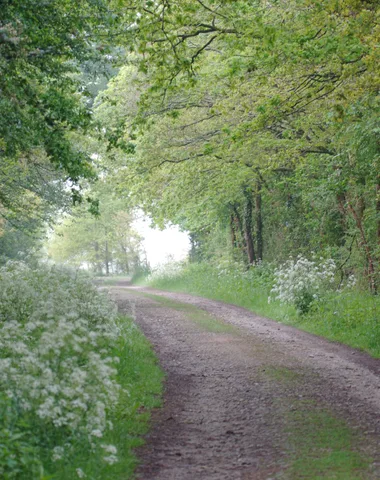Immense and unspoilt, the green carpet of the marsh stretches as far as the eye can see. In this open, horizontal landscape, the labyrinth of shimmering canals bears witness to centuries of history: the mastery of water and man's conquest of the land.
An authentic and serene panorama
From the north, at Bouin, to the south, at Saint-Gilles-Croix-de-Vie, the Marais Breton Vendéen covers 35,000 hectares. It encompasses 2 areas: the northern marsh and the Monts marsh (to the south). The first is protected from the sea by dykes, near which are shellfish polders (shellfish farming) and aquaculture polders (production of aquatic organisms). The second marsh is protected from the sea by dunes planted with pine trees and is characterised by livestock meadows and cereal crops.
The Marais Breton Vendéen
Both sweet and salty, it is a unique and invaluable ecosystem that supports a wealth of biological diversity.
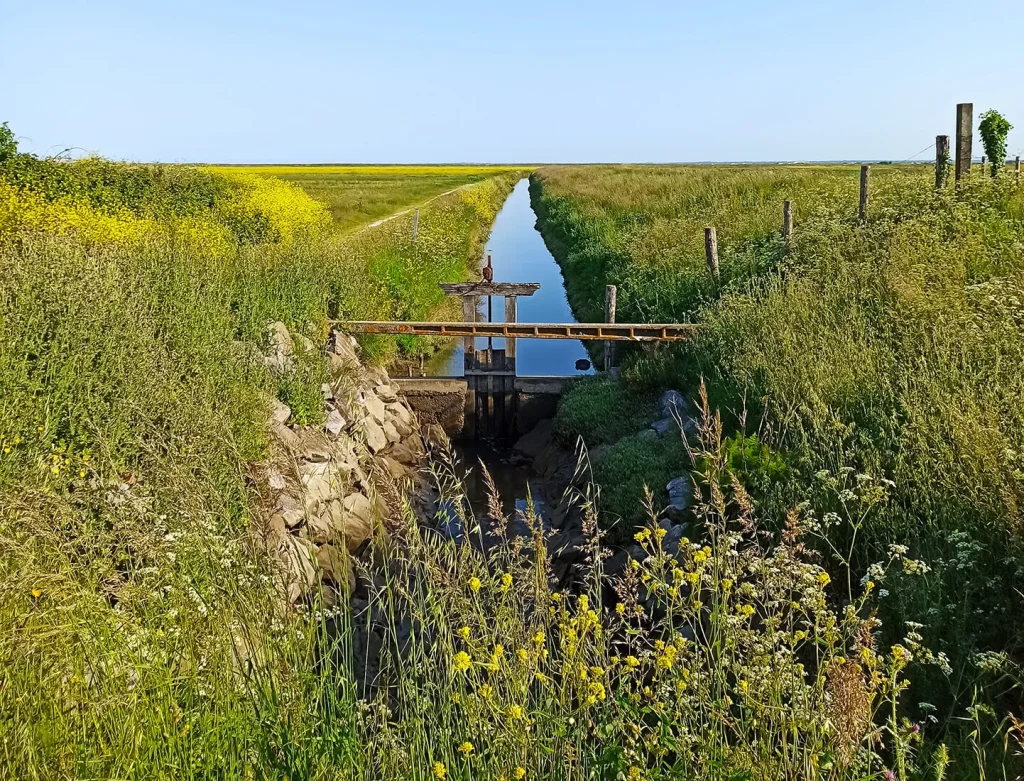
Natural paradise
Sometimes soft, sometimes salty, the marshes are criss-crossed by a network of "étiers". Under the expert hand of the lock-keepers, they allow the salt water needed for the salt marshes around Beauvoir-sur-Mer and to the facilities oyster farms from the coast.
The labyrinth of shimmering canals bears witness to the history of the mastery of water and man's conquest of the earth. An authentic and tranquil panorama, with an intoxicating impression of infinity. It's easy to see why so many artists love this inspiring place...
Life on the marsh, history and tradition
From time immemorial market gardenersThe inhabitants of the marshes have had to adapt to the natural environment.
They lived in bourrines, traditional dwellings built of earth and covered with reeds! Until the 1950s, they travelled by foot, donkey or cart. A simple, independent life. To get around on the "étiers" and the large ditches, they used a flat boat called a "yole". They used it to transport their farm animals and fodder. They also skilfully wielded the "ningle", a long wooden pole that enabled them to jump ditches.
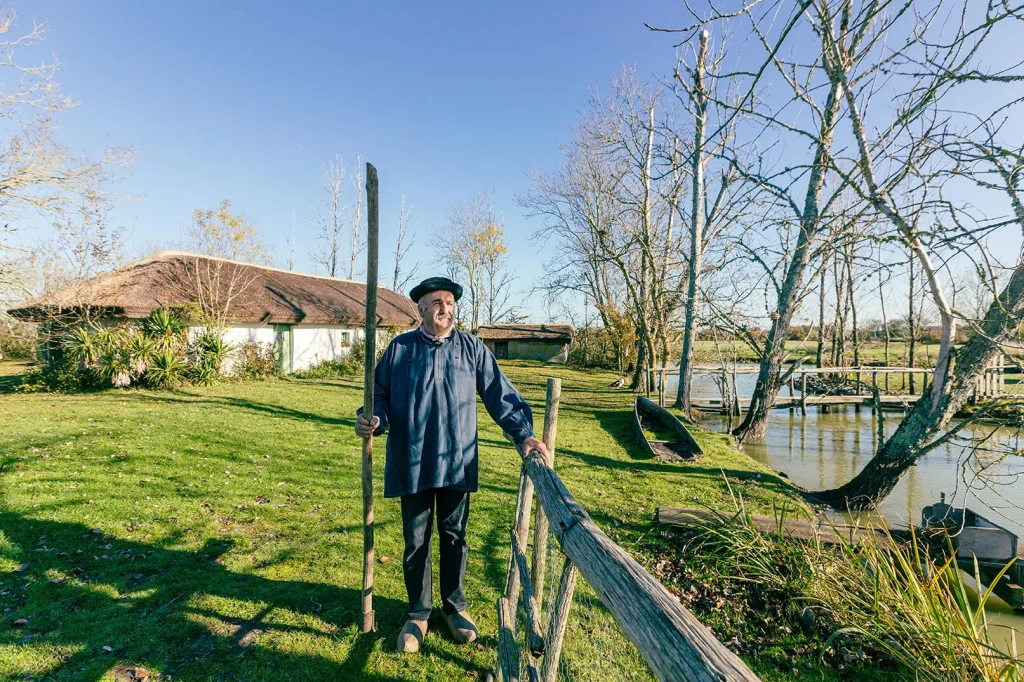
A hospitable marsh
Our vast wildernessThe mild climate and diversity of habitats (fresh, brackish and salt water) encourage species diversity. Thanks to these ideal living conditions, every winter there are 50,000 birds of water. These birds are the pride of the Marais Breton Vendéen. In this haven of peaceIn this way, it is common to come across owls, herons, egrets, white stilts...
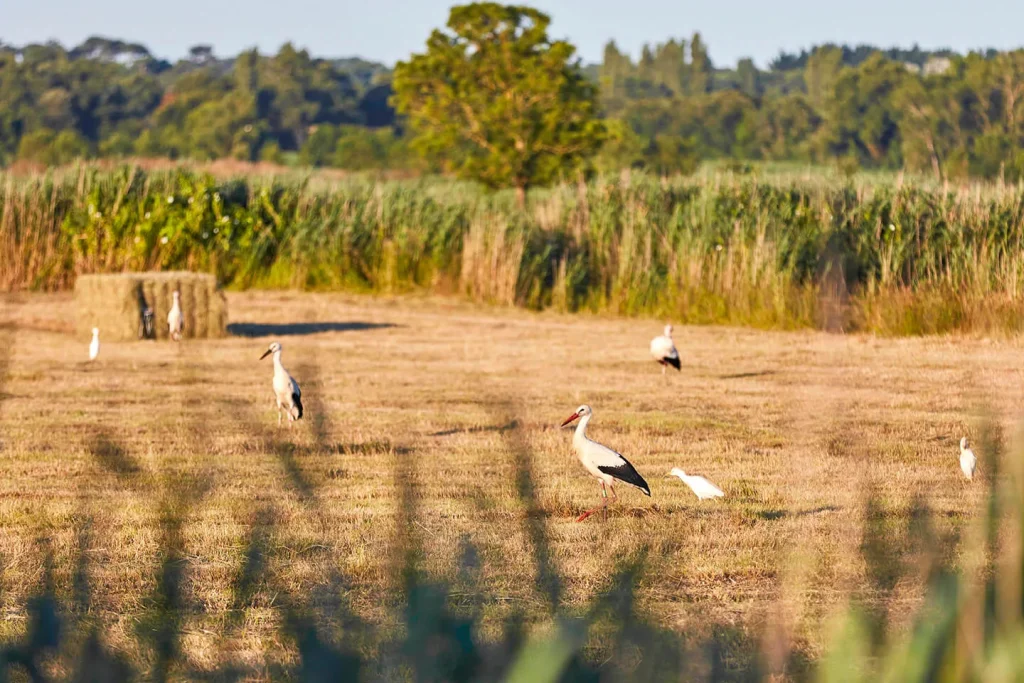
Wildlife
For the past 20 years, a colony of storks has been taking up residence in the marsh on the edge of Ile Chauvet. With around twenty perched nests, these great wading birds can be admired at close quarters. If you prefer mammals, you'll be able to spot the amphibian vole, also known as the water rat, the otter, which is fairly discreet, and the coypu, the one most often seen on the banks of the étiers.
Flora
The Marais Breton Vendéen is also rich in edible plants such as the glasswortknown as the "gherkin of the sea". With its salty, iodised flavour, it is eaten raw or cooked, usually in vinegar.
You can also findobione in the marsh. Also known as "faux-pourpier", it is a shrub that colonises the mud of salt meadows. This plant can be eaten raw or cooked and is rich in vitamin C. It gets its nickname of "sea crisps" because when baked, the leaves become crispy and salty.
Then, themaritime aster also known as "sea spinach" because of the shape of its leaves, can be eaten raw or cooked. The taste of the leaves is similar to that of artichoke hearts, and they are crunchy, tangy and iodised.
